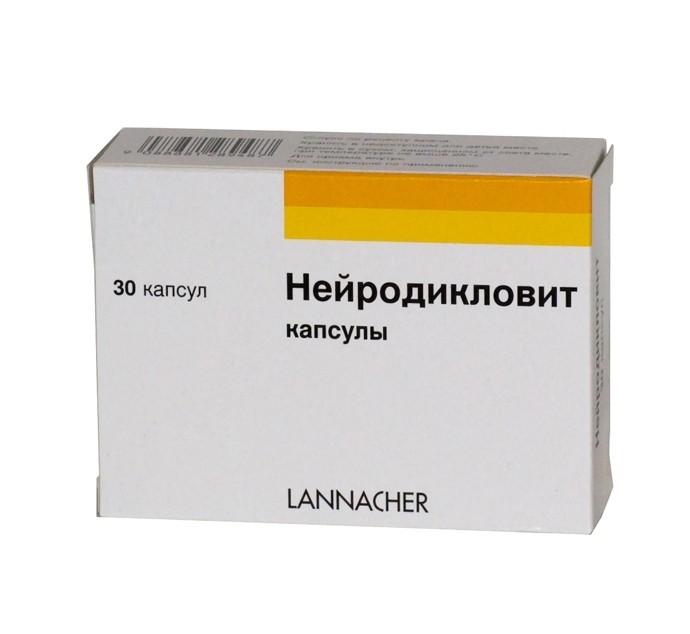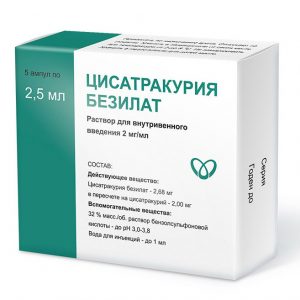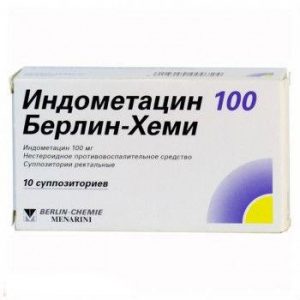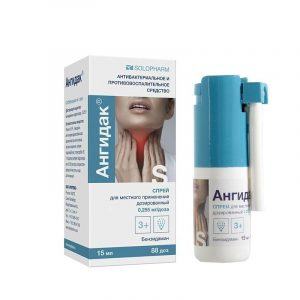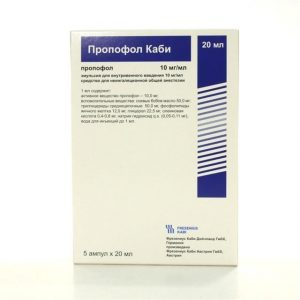Description
Release form
Release capsules.
Packaging
10 capsules per blister PVC / PE / PVDC / Al.
3 blisters each with instructions for use in a cardboard box.
Indications
pain syndrome with inflammation of a non-rheumatic nature (after injuries, surgical and dental interventions
for gynecological diseases – primary algodismenorrhea, adnexitis
for inflammatory diseases of the ENT sphere – pharyngitis, tonsillitis, otitis media)
inflammatory and degenerative diseases of the joints and spine (chronic polyarthritis, rheumatoid arthritis, rheumatoid rheumatoiditis, rheumatoid arthritis )
neuritis and neuralgia (cervical syndrome, lumbago, sciatica) acute gouty arthritis rheumatic soft tissue lesions.
Contraindications
hypersensitivity to the components of the drug (including other non-steroidal anti-inflammatory drugs or vitamins),
erosive-ulcerative lesions of the gastrointestinal tract (in the acute phase),
bleeding from the gastrointestinal tract, gastrointestinal tract
complete or incomplete combination of bronchial asthma,
recurrent polyposis of the nose and paranasal sinuses and intolerance to acetylsalicylic acid (ASA) or other non-steroidal anti-inflammatory drugs ( PVP) (including history), n
arusheniya hematopoiesis,
hemostatic disorders (including hemophilia)
inflammatory bowel disease,
severe liver and heart failure,
period after coronary artery bypass grafting,
severe renal failure (creatinine clearance less than 30 ml / min),
progressive kidney disease,
active liver disease, childhood srd, srd .
Use during pregnancy and lactation
The use of the drug during pregnancy and lactation is contraindicated.
Special instructions
During the period of treatment with the drug, systematic monitoring of the picture of peripheral blood, liver, kidney, and feces for the presence of blood should be carried out.
To reduce the risk of adverse events from the gastrointestinal tract, the minimum effective dose should be used with the lowest possible short course.
In order to quickly achieve the desired therapeutic effect, the tablets are taken 30 minutes before a meal. In other cases, take before, during or after a meal, without chewing, drinking plenty of water.
Due to the important role of prostaglandins in maintaining renal blood flow, particular care should be taken when prescribing to patients with heart or kidney failure, as well as in the treatment of elderly patients taking diuretics and patients who, for whatever reason, have a decrease in circulating blood volume ( including after extensive surgery).
If diclofenac is prescribed in such cases, it is recommended that kidney function be monitored as a precaution.
If, while taking the drug, an increase in the activity of ² Ñliver ² Ñ transaminases persists or increases, if clinical symptoms of hepatotoxicity are noted (including nausea, fatigue, drowsiness, diarrhea, skin itching, jaundice), treatment should be stopped.
Diclofenac (like other NSAIDs) can cause hyperkalemia. Due to the negative effect on fertility, it is not recommended to use the drug for women planning to become pregnant. In patients with infertility (including those undergoing examination), it is recommended to cancel the drug.
Effect on the ability to drive vehicles and mechanisms
During the treatment period, a decrease in the speed of mental and motor reactions is possible, therefore it is necessary to refrain from driving vehicles and engaging in other potentially dangerous activities that require an increased concentration of attention and speed of psychomotor reactions.
Ingredients
One capsule contains:
Active ingredients:
diclofenac sodium 50.0 mg
vitamin mixture: thiamine hydrochloride 50.0 mg pyridoxine hydrochloride 50.0 mg
ine cyanocob.
Excipients:
povidone K 25 8.42 mg,
methacrylic acid and ethyl acrylate copolymer (1: 1) dispersion 30% 5.60 mg,
triethyl citrate 0.60 mg, talc 3.08 mg.
Capsule shell: shell:
titanium dioxide (E 171) 0.9240 mg,
dye iron oxide red (E 172) 0.0061 mg,
dye iron oxide yellow (E 172) 0.0924 mg,
gelatin 45, 1775 mg.
Cap:
titanium dioxide (E 171) 0.7186 mg,
dye iron oxide red (E 172) 0.5144 mg,
gelatin 29.5670 mg.
Description: Hard gelatin capsules No. 1, case: light pinkish-yellow, opaque, lid: pinkish-brown, opaque.
Capsule contents: a mixture of white granulate (diclofenac sodium) and pink powder (thiamine hydrochloride, pyridoxine hydrochloride, cyanocobalamin).
Dosage and administration
Capsules should be taken orally with food, not chewing and drinking plenty of fluids.
Typically, the drug is prescribed 1 capsule 1-3 times a day.
Adults Neurodiclovit is prescribed 1 capsule – at the beginning of treatment 3 times a day, as a maintenance dose – 1-2 times a day.
The duration of therapy depends on the nature and severity of the disease.
Side effects
Gastrointestinal tract:
more often 1% – epigastric pain, bloating, diarrhea, nausea, constipation, flatulence, increased activity of aminotransferases, peptic ulcer with possible complications (bleeding, perforation) less often 1% – vomiting, jaundice, melena, the appearance of blood in the feces, damage to the esophagus, aphthous stomatitis, dry mucous membranes (including the mouth), hepatitis (possibly fulminant course), liver necrosis, cirrhosis, hepatorenal syndrome, changes in appetite , Pancreatitis, holetsistopankreatit colitis.
Nervous system:
more often 1% – headache, dizziness
less than 1% – sleep disturbance, drowsiness, depression, irritability, aseptic meningitis (more often in patients with systemic lupus erythematosus and other systemic diseases of the connective tissue), cramps, general weakness, disorientation, nightmares, a sense of fear.
Sensory organs:
more than 1% – tinnitus
less than 1% – blurred vision, diplopia, impaired taste, reversible or irreversible hearing loss, scotoma.
Skin:
more than 1% – itching, rash
less than 1% – alopecia, urticaria, eczema, toxic dermatitis, erythema multiforme (including Stevens-Johnson syndrome), toxic epidermal necrolysis (Lyell syndrome) , increased photosensitivity, small-point hemorrhages, bullous rashes.
Genitourinary system:
more often 1% – fluid retention
less than 1% – nephrotic syndrome, proteinuria, oliguria, hematuria, interstitial nephritis, papillary necrosis, acute renal failure, azotemia.
Hematopoietic organs and immune system:
less than 1% – anemia (including hemolytic and aplastic anemia), leukopenia, thrombocytopenia, eosinophilia, agranulocytosis, thrombocytopenic purpura, worsening of the course of infectious processes (including the development of necrotic fasciitis.
Respiratory system:
less than 1% – cough, bronchospasm, laryngeal edema, pneumonia.
Cardiovascular system:
less than 1% – increased blood pressure, heart failure, extrasystole, chest pain, myocardial infarction.
Allergic reactions:
less than 1% – anaphylactoid reactions, anaphylactic shock (usually develops rapidly), swelling of the lips and tongue, allergic vasculitis.
Drug interaction
The drug increases the plasma concentration of digoxin, methotrexate, lithium and cyclosporine.
Reduces the effect of diuretics, against the background of potassium-sparing diuretics, the risk of hyperkalemia against the background of anticoagulants is increased, thrombolytic agents (alteplase, streptokinase, urokinase) – the risk of bleeding (usually from the gastrointestinal tract).
Reduces the effects of antihypertensives and hypnotics.
Increases the likelihood of side effects of other NSAIDs and glucocorticosteroid drugs (bleeding in the gastrointestinal tract), toxicity of methotrexate and nephrotoxicity of cyclosporine.
Acetylsalicylic acid reduces the concentration of diclofenac in the blood.
Concomitant use with paracetamol increases the risk of nephrotoxic effects of diclofenac.
Reduces the effect of hypoglycemic agents.
Cefamandol, cefoperazone, cefotetan, valproic acid and plicamycin increase the incidence of hypoprothrombinemia.
Cyclosporine and gold preparations increase the effect of diclofenac on the synthesis of prostaglandins in the kidneys, which increases nephrotoxicity.
Concomitant use with ethanol, colchicine, corticotropin, serotonin reuptake inhibitors and St. John’s wort drugs increases the risk of bleeding in the gastrointestinal tract.
Diclofenac enhances the action of drugs that cause photosensitivity.
Quinolone antibacterial drugs – risk of seizures.
Drugs that block tubular secretion increase the plasma concentration of diclofenac, thereby increasing its toxicity.
The drug reduces the antiparkinsonian effectiveness of levodopa.
Ethanol dramatically reduces thiamine absorption (blood levels may drop by 30%). Long-term anticonvulsant treatment can lead to thiamine deficiency. The use of colchicine and biguanides reduces the absorption of cyanocobalamin. When taking the drug, it is not recommended to take multivitamin complexes that include B vitamins.
Overdose
Symptoms: vomiting, bleeding from the gastrointestinal tract (gastrointestinal tract), epigastric pain, diarrhea, dizziness, tinnitus, lethargy, convulsions rarely – elevation of blood pressure, acute renal toxicity.
Treatment: gastric lavage, activated charcoal, symptomatic therapy aimed at eliminating blood pressure, impaired renal function, convulsions, gastrointestinal irritation, respiratory depression.
Forced diuresis, hemodialysis are ineffective (due to significant protein binding and intense metabolism).
Storage Conditions
In a dry, dark place, at a temperature not exceeding 25 ° C.
Keep out of the reach and sight of children!
Shelf life
3 years.
Do not use after expiration date.
dosage form
capsules depot
Possible product name
Vitatab lozenges with vitamins strawberry 47g Poland
Neurodiclovit CBSA
Neurodiclovit N30 N30 CBSA C. Modifying the VYSVOB
Neurodiclovit caps 30 x
NEURODICLOVITIS CAPS. N30
G.L. Farma GmbH, Austria
